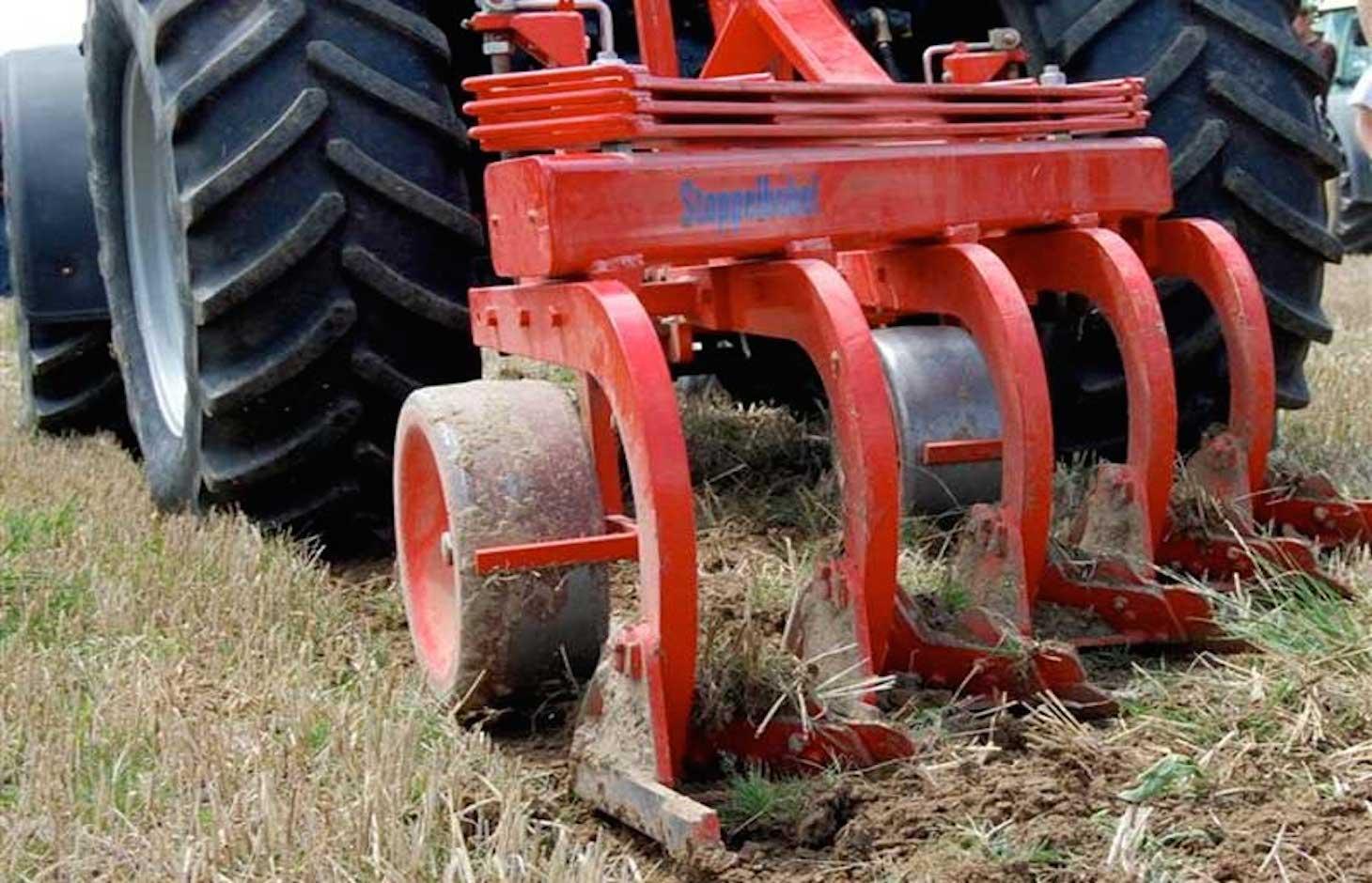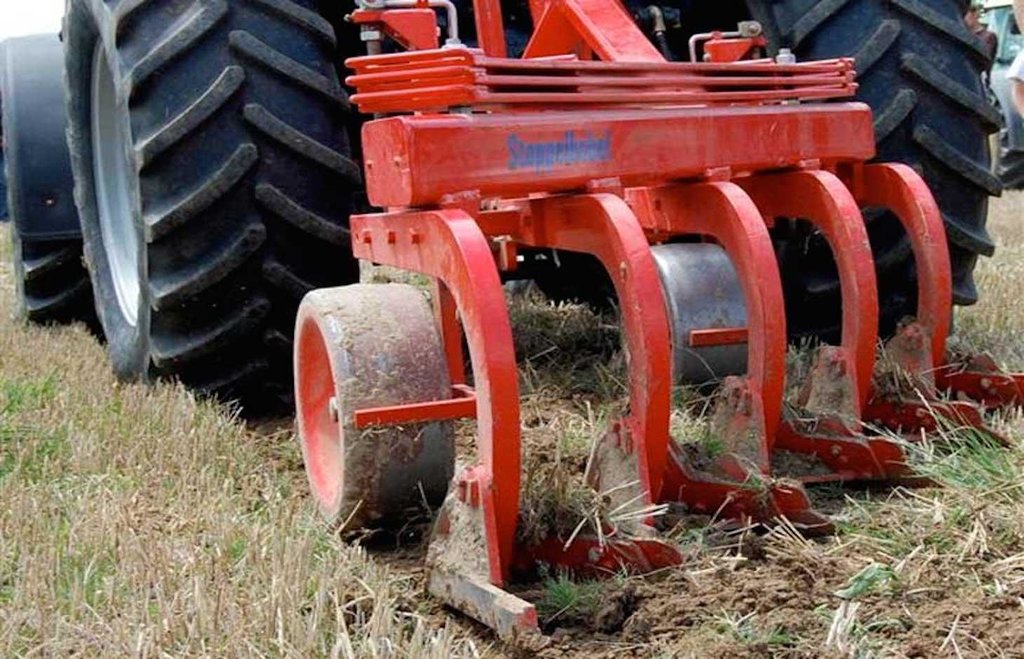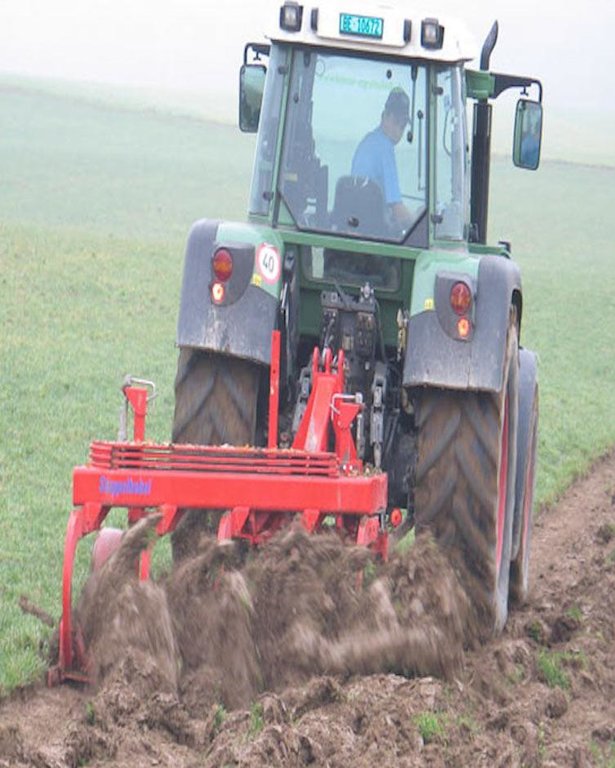Pflugloser Ackerbau im Biolandbau [Switzerland]
- Creation:
- Update:
- Compiler: Deborah Niggli
- Editor: –
- Reviewers: Fabian Ottiger, Alexandra Gavilano
Pflugloser Ackerbau im Biolandbau
technologies_1284 - Switzerland
View sections
Expand all Collapse all1. General information
1.2 Contact details of resource persons and institutions involved in the assessment and documentation of the Technology
land user:
Hermann Arni
Switzerland
Name of project which facilitated the documentation/ evaluation of the Technology (if relevant)
Preventing and Remediating degradation of soils in Europe through Land Care (EU-RECARE )Name of the institution(s) which facilitated the documentation/ evaluation of the Technology (if relevant)
CDE Centre for Development and Environment (CDE Centre for Development and Environment) - Switzerland1.3 Conditions regarding the use of data documented through WOCAT
The compiler and key resource person(s) accept the conditions regarding the use of data documented through WOCAT:
Yes
2. Description of the SLM Technology
2.1 Short description of the Technology
Definition of the Technology:
Pfluglose Anbauverfahren im Biolandbau sind momentan noch sehr selten. Trotzdem hat der Bauer verschiedene Bemühungen (Maschinen, Mulchsaat) unternommen, um seinen Betrieb pfluglos zu halten.
2.2 Detailed description of the Technology
Description:
Bei dieser Technologie geht es um Massnahmen, welche zur pfluglosen Bodenbearbeitung im Biolandbau verwendet werden können. Dazu verwendet der Betrieb einerseits einen Stoppelhobel von 5-10cm Tiefe und betreibt Mulchsaat. Zudem passt er seine Fruchtfolge immer wieder an. Für die Unkrautunterdrückung setzt der Bauer auf eine ständige Bodenbedeckung.
Purpose of the Technology: Der Betrieb betreibt seit 2009 pfluglosen Biolandbau. Zuerst erfolgte die Umstellung auf Bio und dann das Wegkommen vom Pflug. Die reduzierte Bodenbearbeitung wirkt der Erosion von fruchtbarem Boden entgegen. Zudem verbessert sie die Nährstoffversorgung im Boden, schont die Kapillarität und verbessert dadurch den Wasserhaushalt des Bodens. Davon ist der Landnutzer überzeugt.
Establishment / maintenance activities and inputs: Eine Überzeugung von pfluglosem Ackerbau war beim Bauern schon lange da. Durch seine Ausbildung bei Urs Vökt wurde sein Bewusstsein zusätzlich geschärft für nachhaltige pfluglose Anbauverfahren.
Anfangs wurde versucht, mit dem Feingrubber ganzflächig schneidend den Boden zu Bearbeiten. Dies führte jedoch zu Problemen. Schliesslich schaffte sich der Bauer einen Stoppelhobel der Firma Zobel aus Deutschland an. Heute setzt er diesen in Kombination mit dem Feingrubber ein.
2.3 Photos of the Technology
2.5 Country/ region/ locations where the Technology has been applied and which are covered by this assessment
Country:
Switzerland
Region/ State/ Province:
Bern
Further specification of location:
Hettiswil
Comments:
Total area covered by the SLM Technology is 0.31 km2.
2.6 Date of implementation
If precise year is not known, indicate approximate date:
- less than 10 years ago (recently)
2.7 Introduction of the Technology
Specify how the Technology was introduced:
- through land users' innovation
Comments (type of project, etc.):
seit 2009 wird der Boden ohne Pflug bearbeitet. Der Bauer nahm am Förderprogramm Boden des Kantons Bern teil und hat die Idee für pfluglose Anbauverfahren jedoch auch selbst immer verfolgt. Er kam via eine deutsche Agrarzeitung auf den Stoppelhobel.
3. Classification of the SLM Technology
3.2 Current land use type(s) where the Technology is applied

Cropland
- Annual cropping
Comments:
Major land use problems (land users’ perception): Verschlämmung durch eine zu feine Bodenbearbeitung kommt vor. Zudem gibt es Verdichtungen im Unterboden.
3.5 SLM group to which the Technology belongs
- improved ground/ vegetation cover
- minimal soil disturbance
3.6 SLM measures comprising the Technology

agronomic measures
- A3: Soil surface treatment
- A4: Subsurface treatment
Comments:
Main measures: agronomic measures
Type of agronomic measures: zero tillage / no-till
3.7 Main types of land degradation addressed by the Technology

soil erosion by water
- Wt: loss of topsoil/ surface erosion
- Wo: offsite degradation effects

physical soil deterioration
- Pc: compaction
Comments:
Main type of degradation addressed: Wt: loss of topsoil / surface erosion
Secondary types of degradation addressed: Wo: offsite degradation effects, Pc: compaction
Main causes of degradation: soil management
Secondary causes of degradation: crop management (annual, perennial, tree/shrub), change in temperature, Heavy / extreme rainfall (intensity/amounts)
3.8 Prevention, reduction, or restoration of land degradation
Specify the goal of the Technology with regard to land degradation:
- prevent land degradation
Comments:
Main goals: prevention of land degradation
4. Technical specifications, implementation activities, inputs, and costs
4.1 Technical drawing of the Technology
Technical specifications (related to technical drawing):
Technical knowledge required for field staff / advisors: moderate (Grundausbildung und Interesse notwendig)
Technical knowledge required for land users: high (Interesse und Auseinandersetzung mit pfluglosem Anbau als Herausforderung wichtig. Projekte, Literatur und Kurse können dabei helfen.)
Main technical functions: improvement of surface structure (crusting, sealing), improvement of subsoil structure (hardpan)
Secondary technical functions: improvement of topsoil structure (compaction), increase of infiltration, increase / maintain water stored in soil
Zero tillage / no-till
Material/ species: Stoppelhobel, Feingrubber und Mulchgerät (gemietet)
4.3 Establishment activities
| Activity | Timing (season) | |
|---|---|---|
| 1. | Kauf Stoppelhobel | |
| 2. | Verkauf Pflug | |
| 3. | Kauf Feingrubber |
4.4 Costs and inputs needed for establishment
| Specify input | Unit | Quantity | Costs per Unit | Total costs per input | % of costs borne by land users | |
|---|---|---|---|---|---|---|
| Equipment | Stoppelhobel | ha | 31.0 | 320.0 | 9920.0 | 100.0 |
| Equipment | Feingrubber | ha | 31.0 | 640.0 | 19840.0 | 100.0 |
| Total costs for establishment of the Technology | 29760.0 | |||||
| Total costs for establishment of the Technology in USD | 29760.0 | |||||
4.6 Costs and inputs needed for maintenance/ recurrent activities (per year)
Comments:
Kauf von Stoppelhobel und Feingrubber, Verkauf von Pflug konnte nicht dargestellt werden, würde die Kosten jedoch noch um 190.- Fr./ ha senken.
4.7 Most important factors affecting the costs
Describe the most determinate factors affecting the costs:
Maschinenanschaffung. Zwar kann der Pflug für ca. 6'000.- Fr. verkauft werden, der Stoppelhobel ist jedoch teurer und der Feingrubber muss entweder gekauft oder gemietet werden.
5. Natural and human environment
5.1 Climate
Annual rainfall
- < 250 mm
- 251-500 mm
- 501-750 mm
- 751-1,000 mm
- 1,001-1,500 mm
- 1,501-2,000 mm
- 2,001-3,000 mm
- 3,001-4,000 mm
- > 4,000 mm
Agro-climatic zone
- sub-humid
Thermal climate class: temperate
5.2 Topography
Slopes on average:
- flat (0-2%)
- gentle (3-5%)
- moderate (6-10%)
- rolling (11-15%)
- hilly (16-30%)
- steep (31-60%)
- very steep (>60%)
Landforms:
- plateau/plains
- ridges
- mountain slopes
- hill slopes
- footslopes
- valley floors
Altitudinal zone:
- 0-100 m a.s.l.
- 101-500 m a.s.l.
- 501-1,000 m a.s.l.
- 1,001-1,500 m a.s.l.
- 1,501-2,000 m a.s.l.
- 2,001-2,500 m a.s.l.
- 2,501-3,000 m a.s.l.
- 3,001-4,000 m a.s.l.
- > 4,000 m a.s.l.
Comments and further specifications on topography:
Altitudinal zone: 501-1000 m a.s.l. ( 550m a.s.l.)
5.3 Soils
Soil depth on average:
- very shallow (0-20 cm)
- shallow (21-50 cm)
- moderately deep (51-80 cm)
- deep (81-120 cm)
- very deep (> 120 cm)
Soil texture (topsoil):
- medium (loamy, silty)
Topsoil organic matter:
- medium (1-3%)
If available, attach full soil description or specify the available information, e.g. soil type, soil PH/ acidity, Cation Exchange Capacity, nitrogen, salinity etc.
Soil texture: Medium (sandiger Lehm)
Soil fertility is high
Soil drainage/infiltration is good (Böden sind drainiert)
Soil water storage capacity is medium (schwere Böden wären noch besser)
5.4 Water availability and quality
Ground water table:
5-50 m
Availability of surface water:
good
Water quality (untreated):
good drinking water
5.5 Biodiversity
Species diversity:
- high
5.6 Characteristics of land users applying the Technology
Market orientation of production system:
- commercial/ market
Off-farm income:
- 10-50% of all income
Relative level of wealth:
- rich
Individuals or groups:
- individual/ household
Level of mechanization:
- manual work
- mechanized/ motorized
Gender:
- men
Indicate other relevant characteristics of the land users:
Land users applying the Technology are mainly common / average land users
Off-farm income specification: 50%, Frau arbeitet 80%, tut das aber auch gerne. Ansonsten wäre jedoch eine Intensivierung des Betriebs notwendig.
Level of macheniaztion: Mechanised (zu 80%) and manuam labour ( 20%, vor allem Unkrautregulierung)
5.7 Average area of land used by land users applying the Technology
- < 0.5 ha
- 0.5-1 ha
- 1-2 ha
- 2-5 ha
- 5-15 ha
- 15-50 ha
- 50-100 ha
- 100-500 ha
- 500-1,000 ha
- 1,000-10,000 ha
- > 10,000 ha
Is this considered small-, medium- or large-scale (referring to local context)?
- medium-scale
Comments:
20 ha
5.8 Land ownership, land use rights, and water use rights
Land ownership:
- individual, titled
Land use rights:
- individual
Water use rights:
- individual
5.9 Access to services and infrastructure
health:
- poor
- moderate
- good
education:
- poor
- moderate
- good
technical assistance:
- poor
- moderate
- good
employment (e.g. off-farm):
- poor
- moderate
- good
markets:
- poor
- moderate
- good
energy:
- poor
- moderate
- good
roads and transport:
- poor
- moderate
- good
drinking water and sanitation:
- poor
- moderate
- good
financial services:
- poor
- moderate
- good
6. Impacts and concluding statements
6.1 On-site impacts the Technology has shown
Socio-economic impacts
Production
crop production
risk of production failure
Income and costs
workload
Comments/ specify:
Schnellere Bearbeitung als Pflug
Socio-cultural impacts
SLM/ land degradation knowledge
Comments/ specify:
Durch Programme und Erfahrung mit pfluglosem Anbau
Improved livelihoods and human well-being
Comments/ specify:
Idee, dass Biolandbau auch ohne den Einsatz des Pfluges funktionieren soll, wurde bestätigt, was den Bauern sehr freut.
Ecological impacts
Water cycle/ runoff
surface runoff
Soil
soil cover
Comments/ specify:
Durch Mulchsaat
soil crusting/ sealing
soil compaction
Biodiversity: vegetation, animals
pest/ disease control
Comments/ specify:
Vor allem Disteln und Quecken als Problem, da wenig Kunstwiese
6.2 Off-site impacts the Technology has shown
damage on neighbours' fields
6.3 Exposure and sensitivity of the Technology to gradual climate change and climate-related extremes/ disasters (as perceived by land users)
Gradual climate change
Gradual climate change
| Season | increase or decrease | How does the Technology cope with it? | |
|---|---|---|---|
| annual temperature | increase | well |
Climate-related extremes (disasters)
Meteorological disasters
| How does the Technology cope with it? | |
|---|---|
| local rainstorm | not well |
| local windstorm | well |
6.4 Cost-benefit analysis
How do the benefits compare with the establishment costs (from land users’ perspective)?
Short-term returns:
slightly negative
Long-term returns:
positive
Comments:
Die Menge und der Aufwand für die Unkrautregulierung bestimmen auch die Höhe des Ertrages. Dadurch hat der Unkrautdruck auch Einfluss auf die Kosten-Nutzen-Bilanz.
6.5 Adoption of the Technology
If available, quantify (no. of households and/ or area covered):
1
Comments:
1 land user families have adopted the Technology without any external material support
Comments on spontaneous adoption: Am Anfang wurde der Bauer oft belächelt für seine Ideen und vor allem wegen dem Unkrautwuchs, das er noch nicht im Griff hatte. Heute erhält er jedoch positive Rückmeldungen, vor allem zum pfluglosen Anbau von Kartoffeln. Zudem sind viele Nachbarn von der Schnelligkeit der Bearbeitung beeindruckt, welche mit dem Feingrubber und Stoppelhobel möglich sind. In Hindelbank selbst gibt es einen weiteren Bauern, welcher pfluglosen Biolandbau betreibt.
There is a little trend towards spontaneous adoption of the Technology
6.7 Strengths/ advantages/ opportunities of the Technology
| Strengths/ advantages/ opportunities in the land user’s view |
|---|
| Die Umstellung auf pfluglosen Ackerbau mit den aufgezeigten Maschinen und Massnahmen führt zu einer höheren Flächenleistung. |
| Die Massnahmen sind höchst ressourcenschonend. Sie erhalten die wichtigen Bodenfunktionen und vermindern Verdichtung und Verschlämmung. |
|
Es wird ein reduzierter Düngemitteleinsatz verwendet, da die Mikroorganismen zu einer schnelleren Verarbeitung der Mittel im Boden beitragen. How can they be sustained / enhanced? Diese Mikroorganismen kommen jedoch nur mit einem funktionierenden Boden, das heisst der Pflug darf nicht mehr verwendet werden. |
| Die biologische Aktivität des Bodens und die Nährstoffverfügbarkeit ist erhöht. |
| Die Tragfähigkeit des Bodens wird erhöht. Dies ist wichtig, um die Verdichtung des Bodens zu verhindern. |
6.8 Weaknesses/ disadvantages/ risks of the Technology and ways of overcoming them
| Weaknesses/ disadvantages/ risks in the land user’s view | How can they be overcome? |
|---|---|
| Das einzige Problem der Massnahmen ist die Bekämpfung von Problem-Unkräutern wie Disteln und Quecken. | Das Problem ist hier eher ein Problem der Fruchtfolge, da der Bauer wenig Kunstwiesen hat, welche die Unkräuter regulieren. |
7. References and links
7.1 Methods/ sources of information
Links and modules
Expand all Collapse allLinks
No links
Modules
No modules




